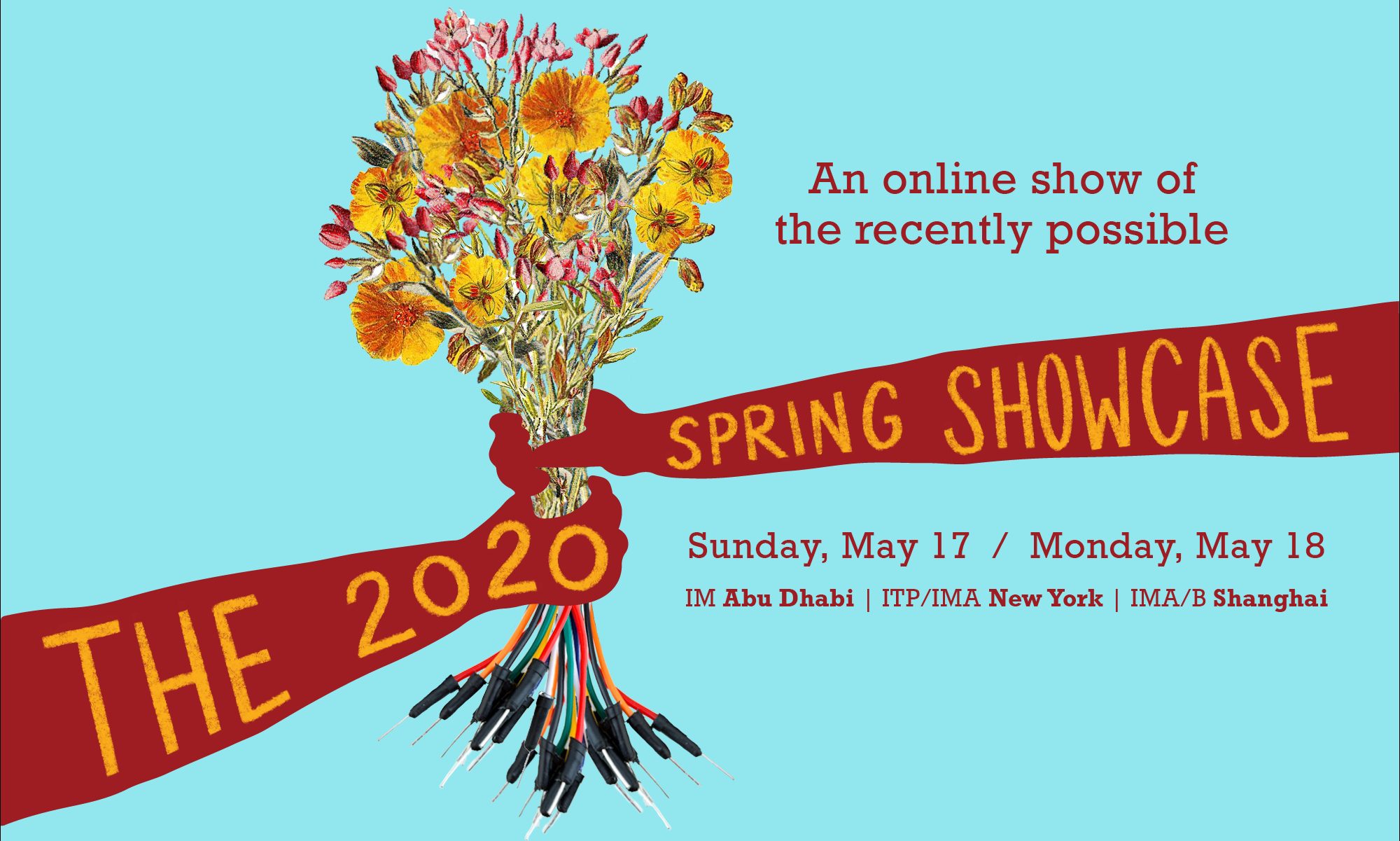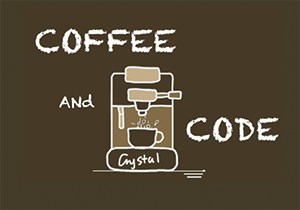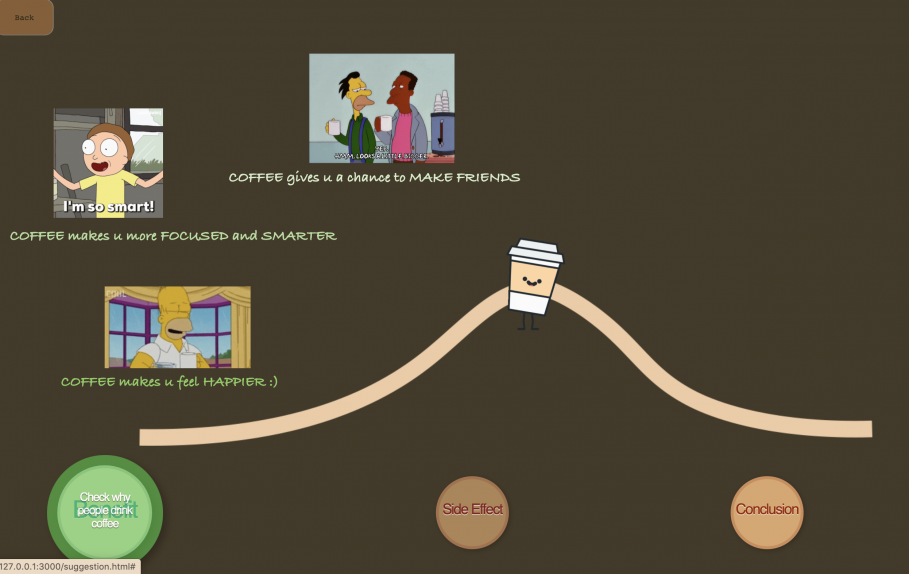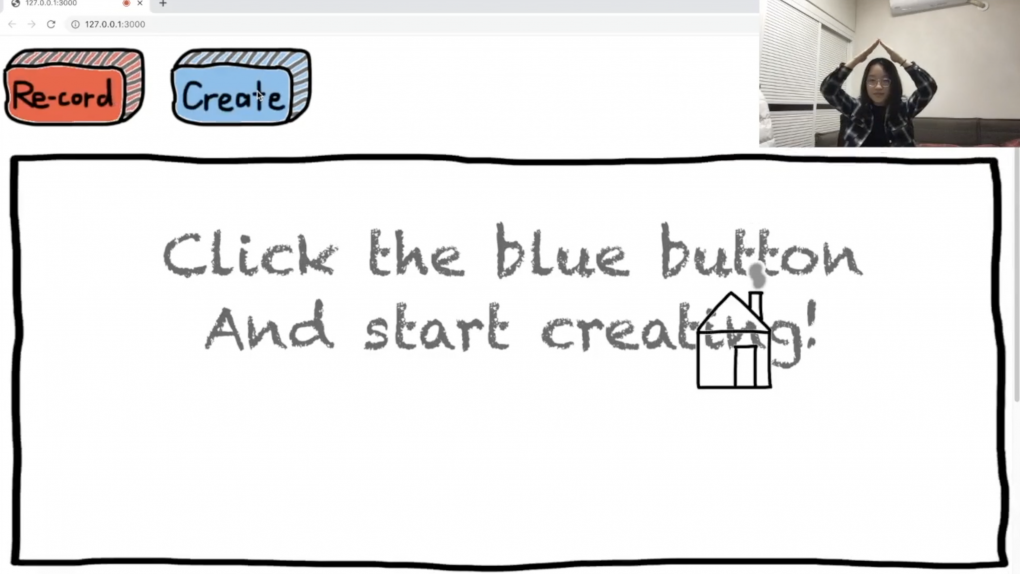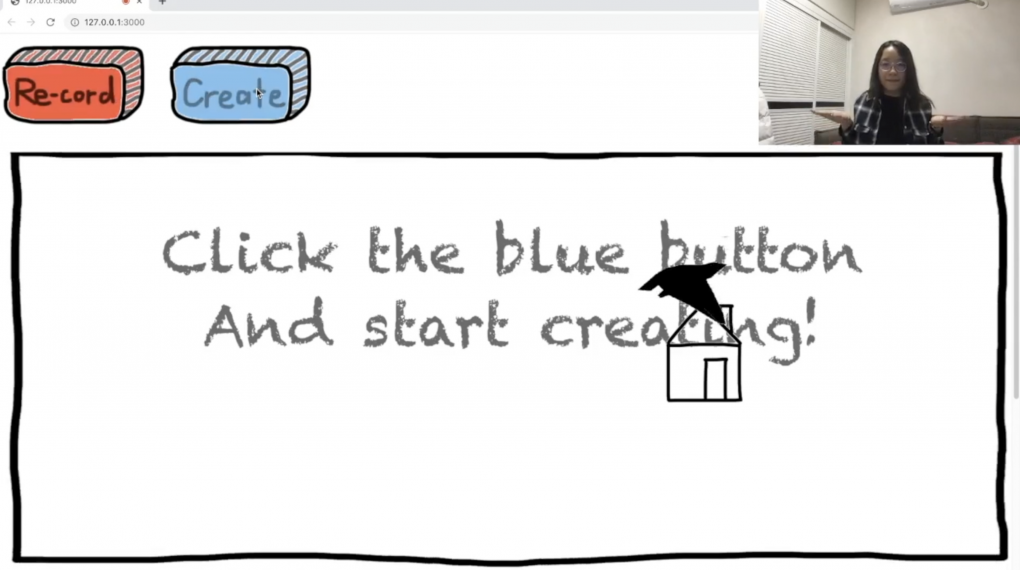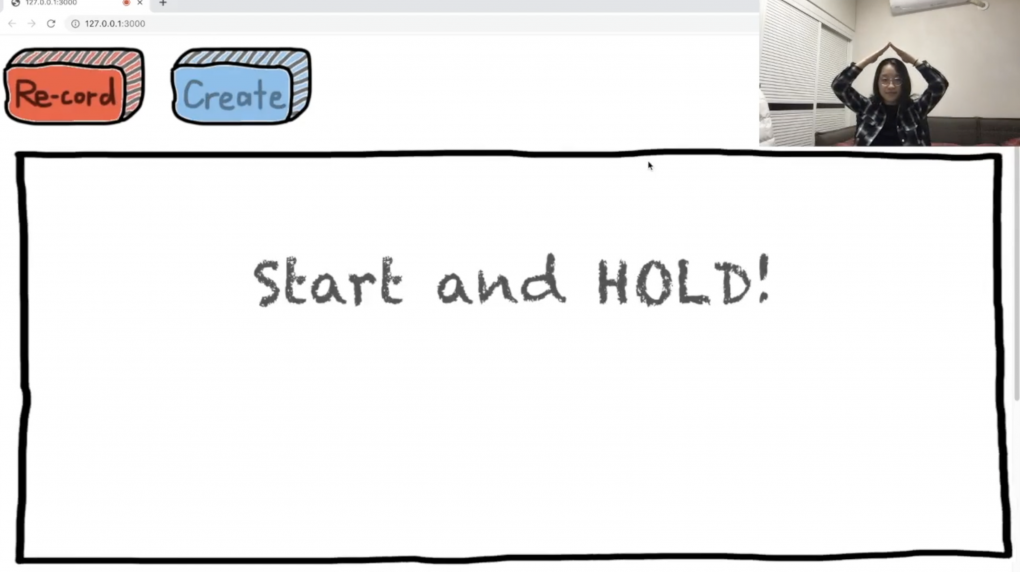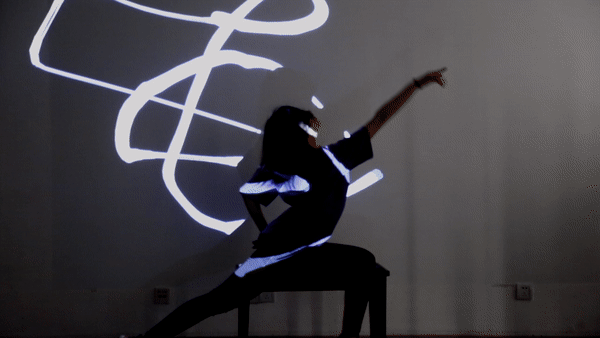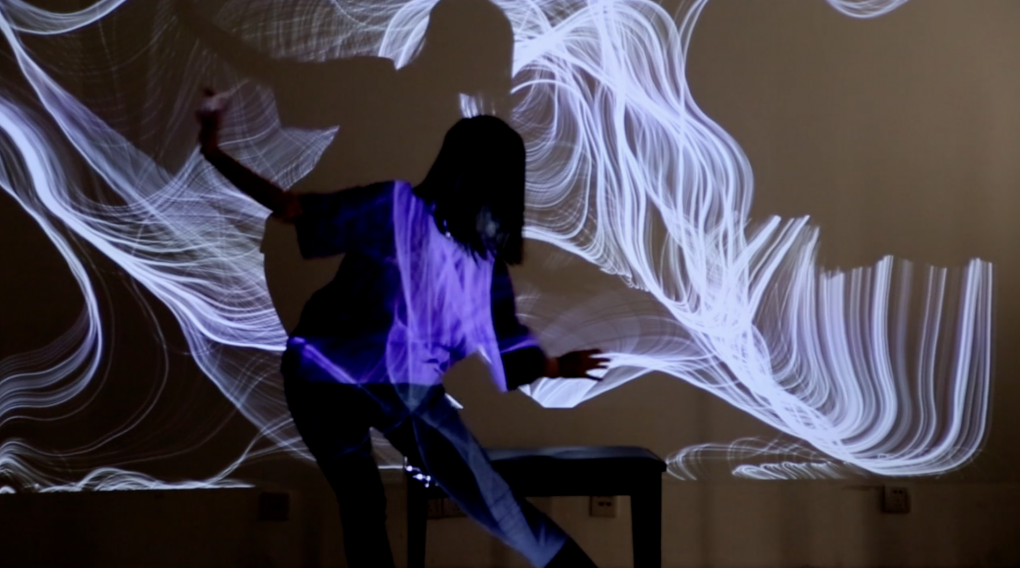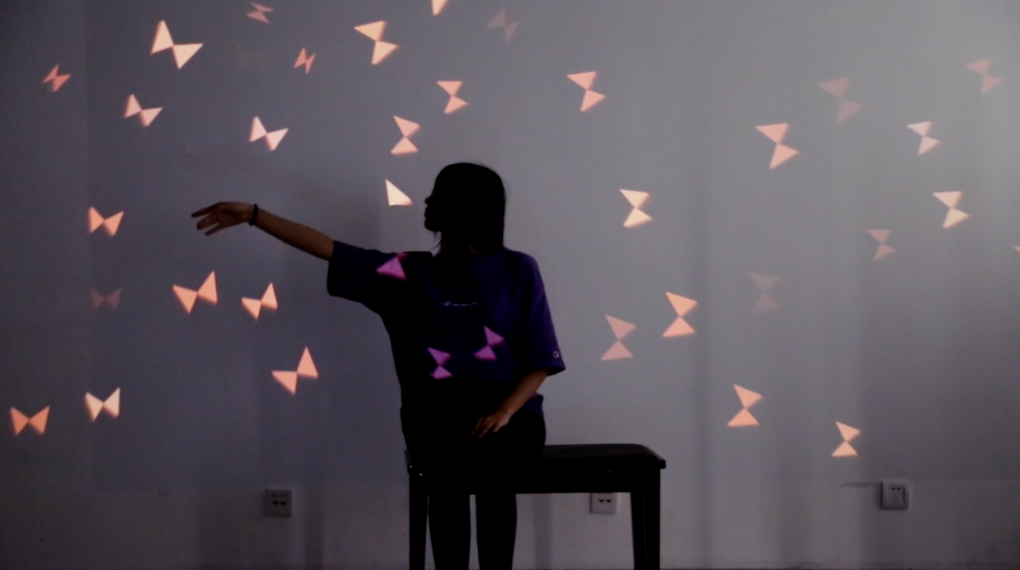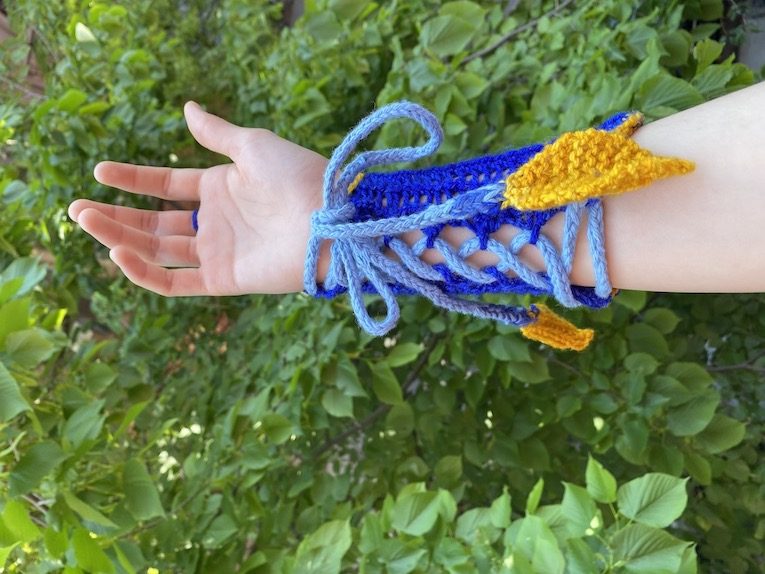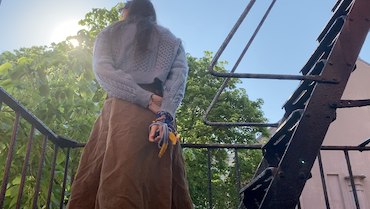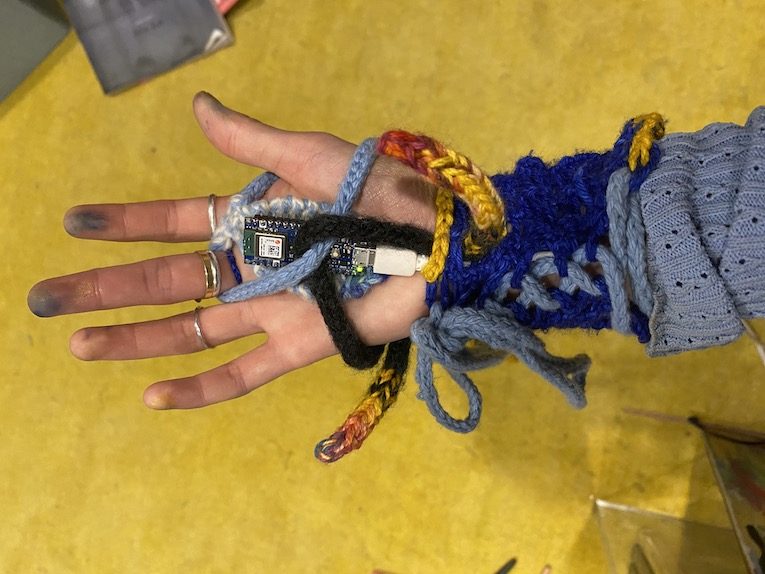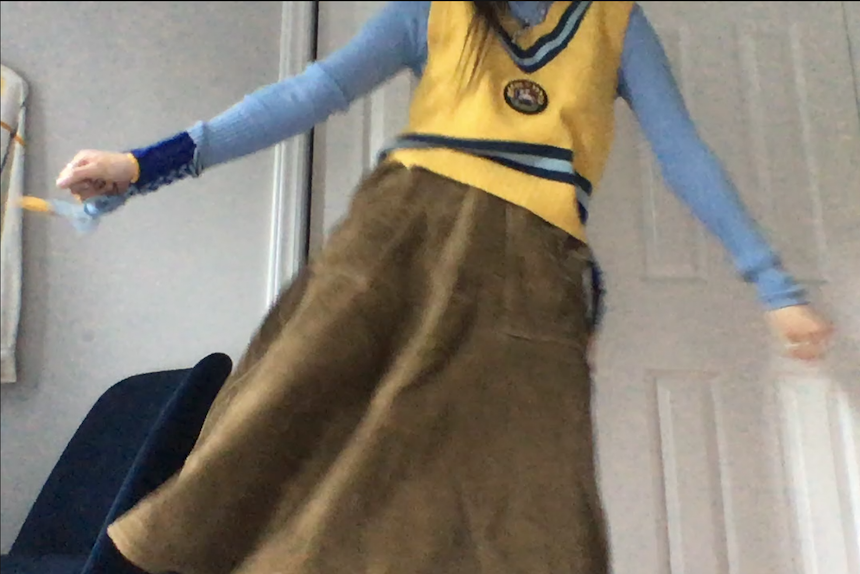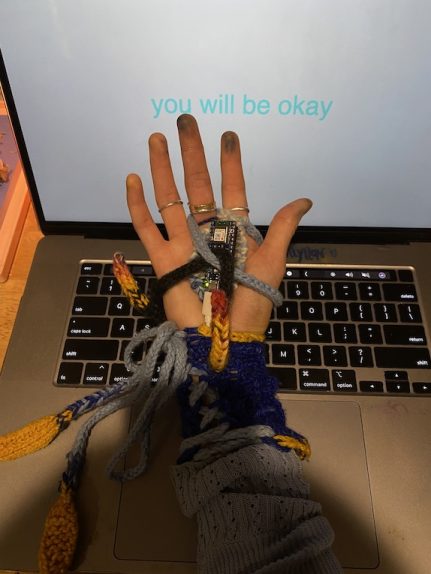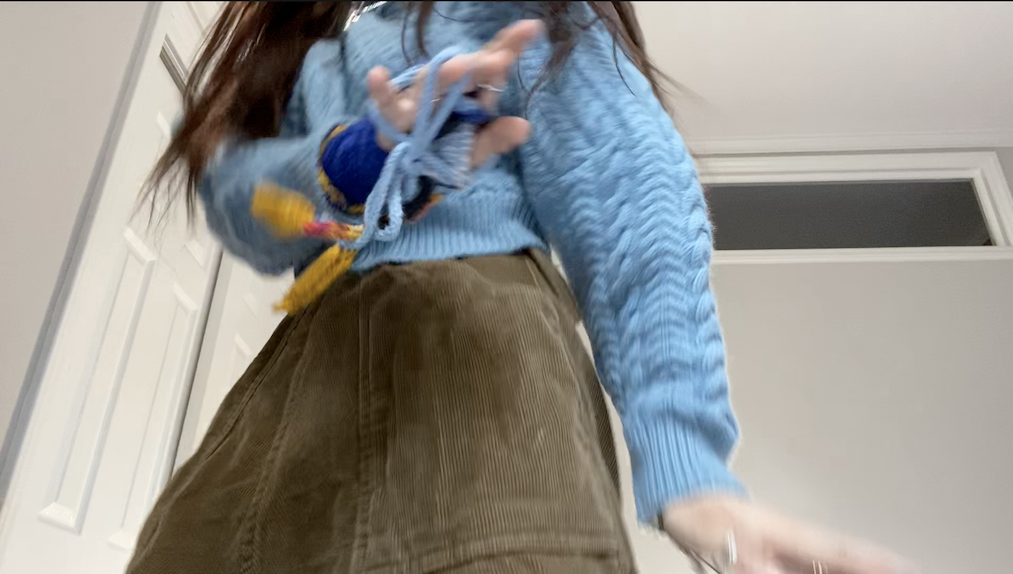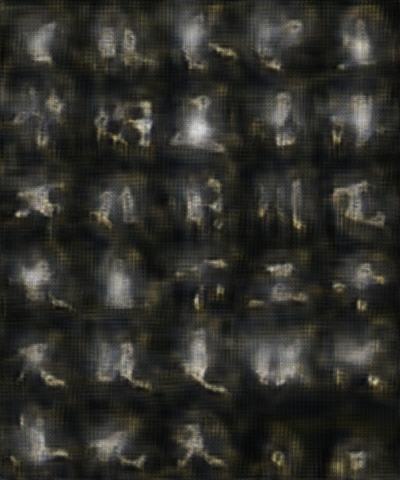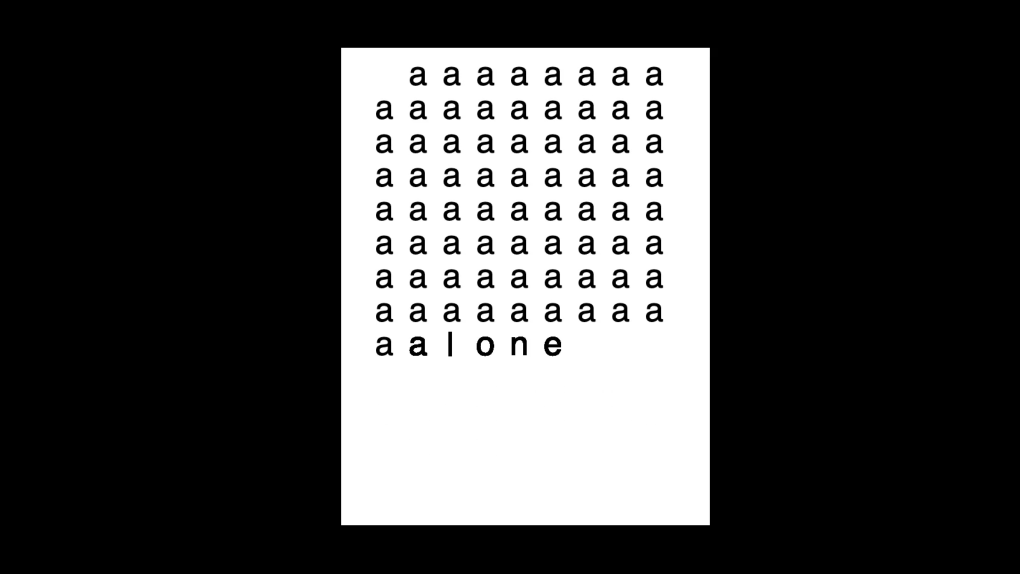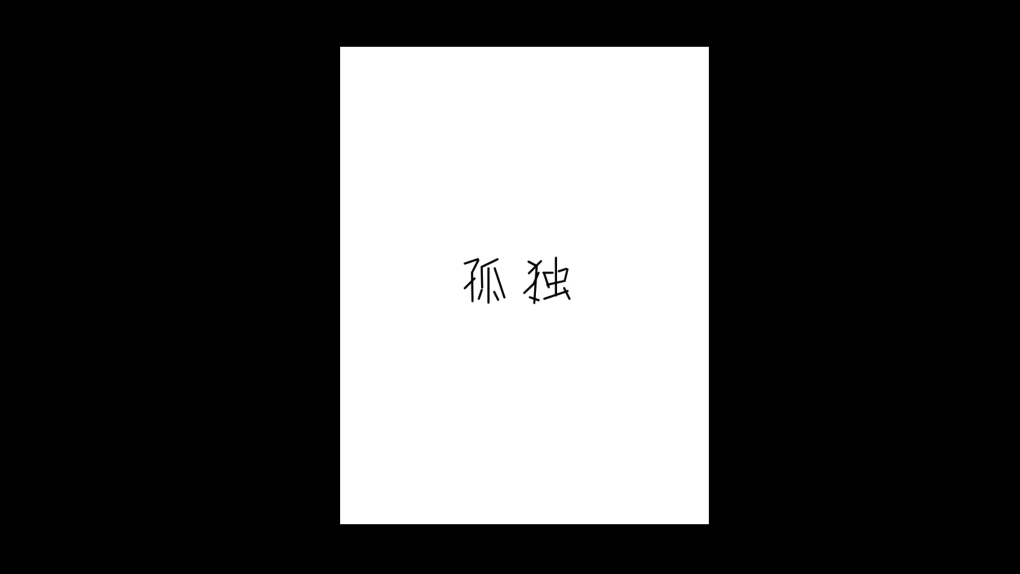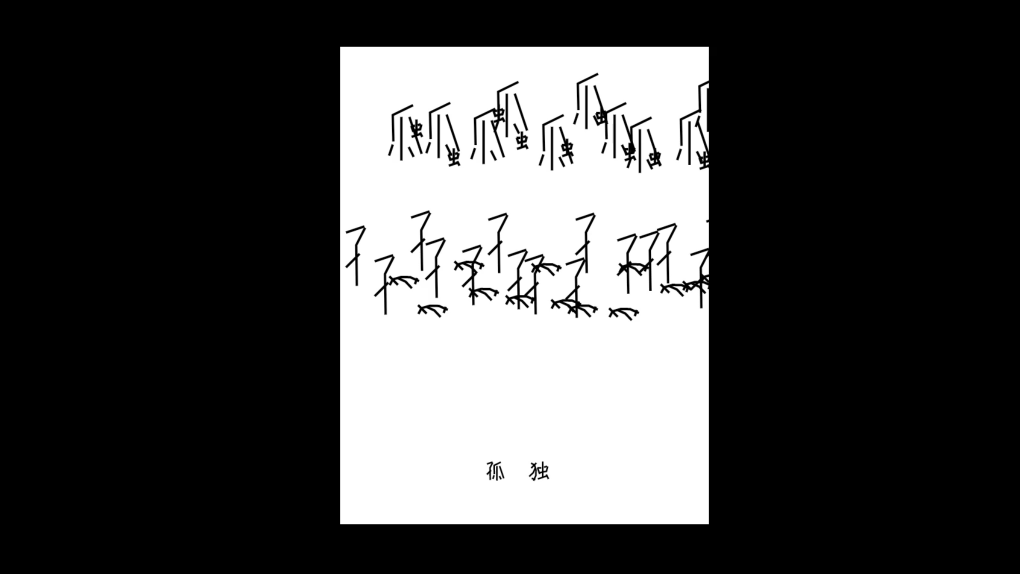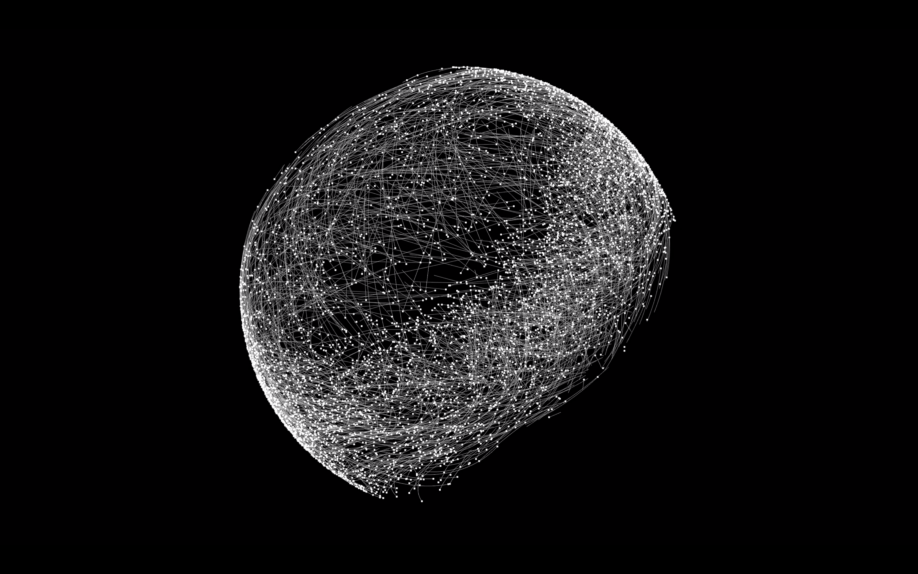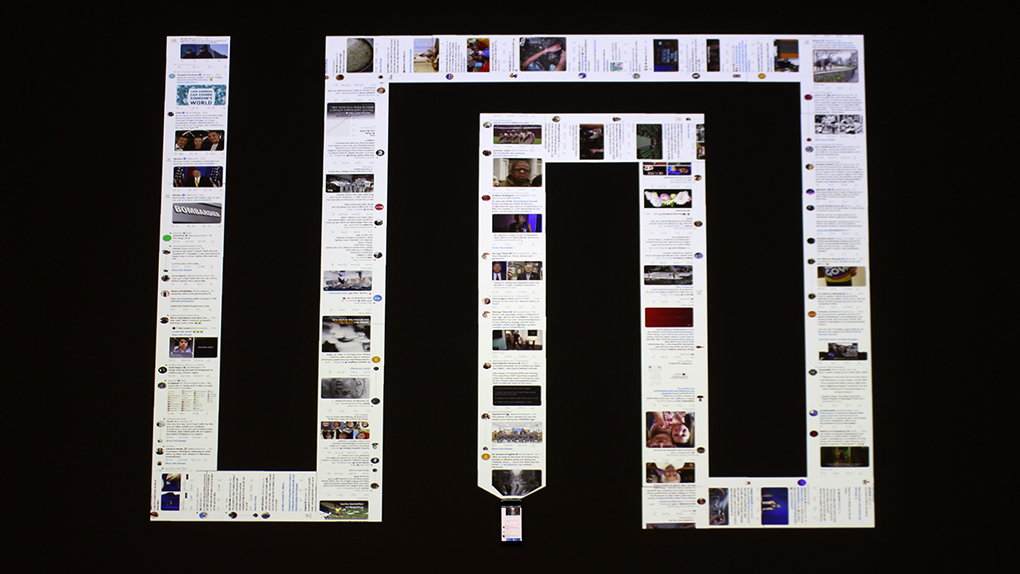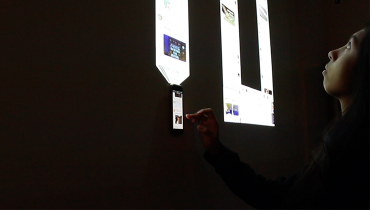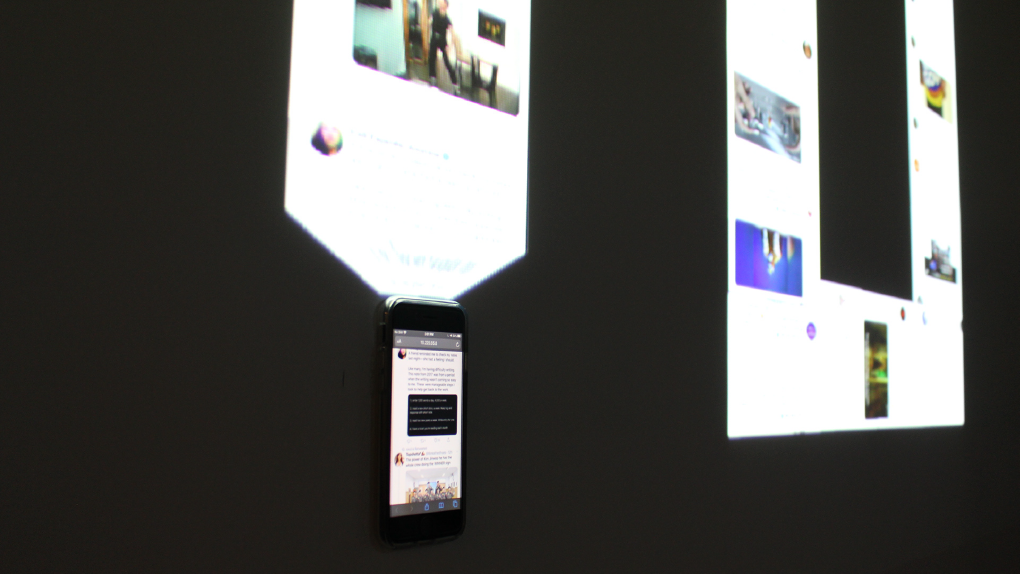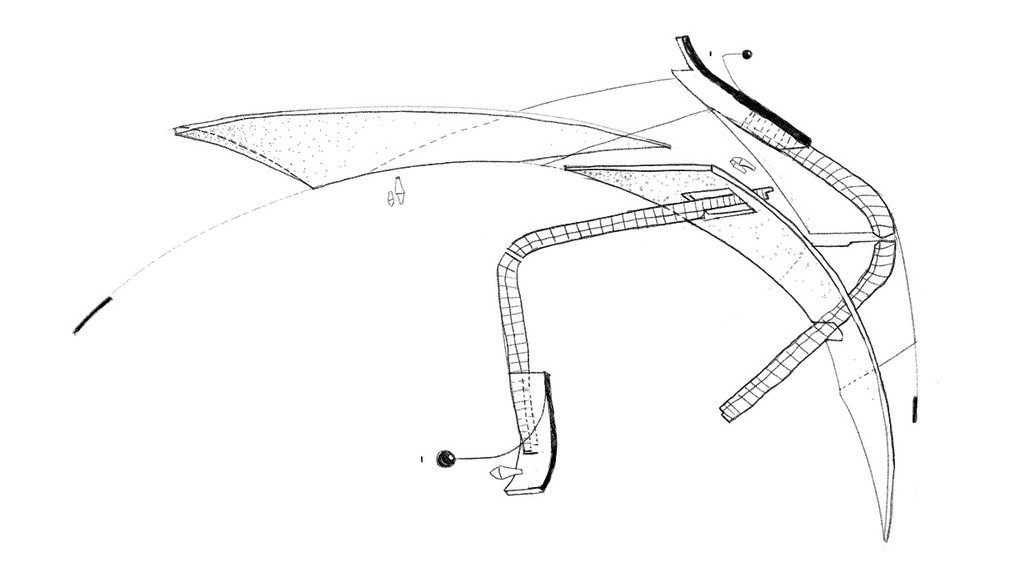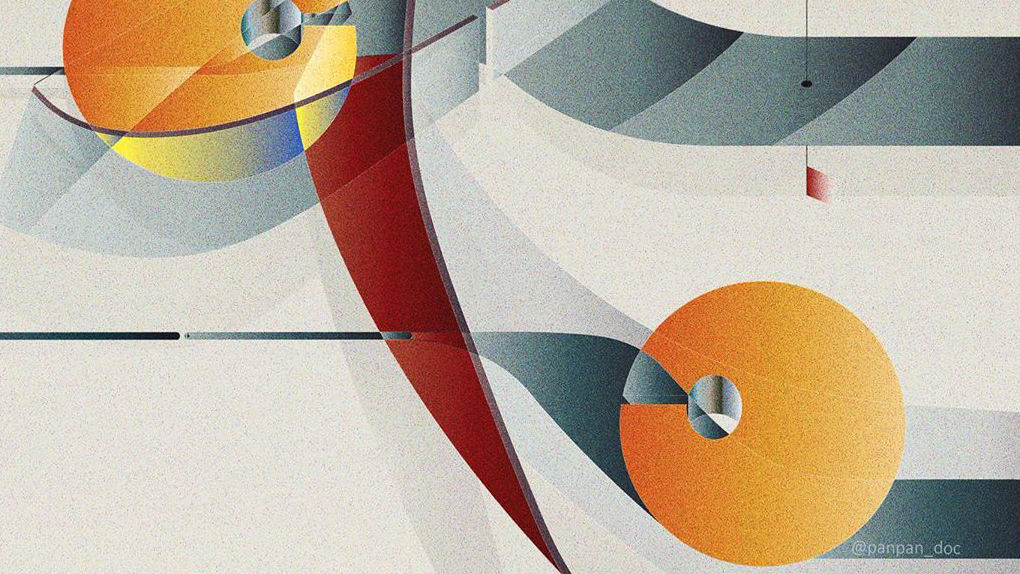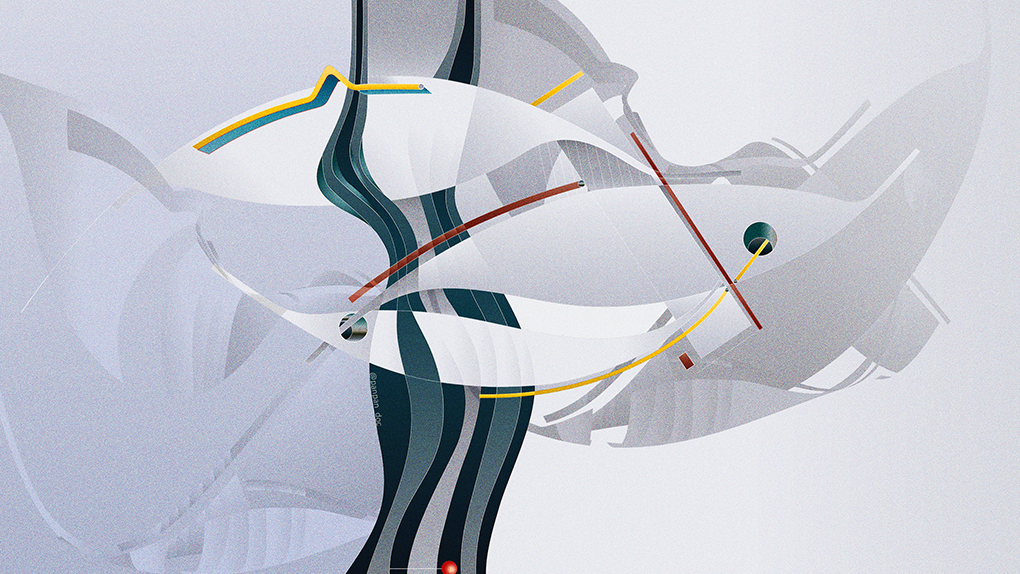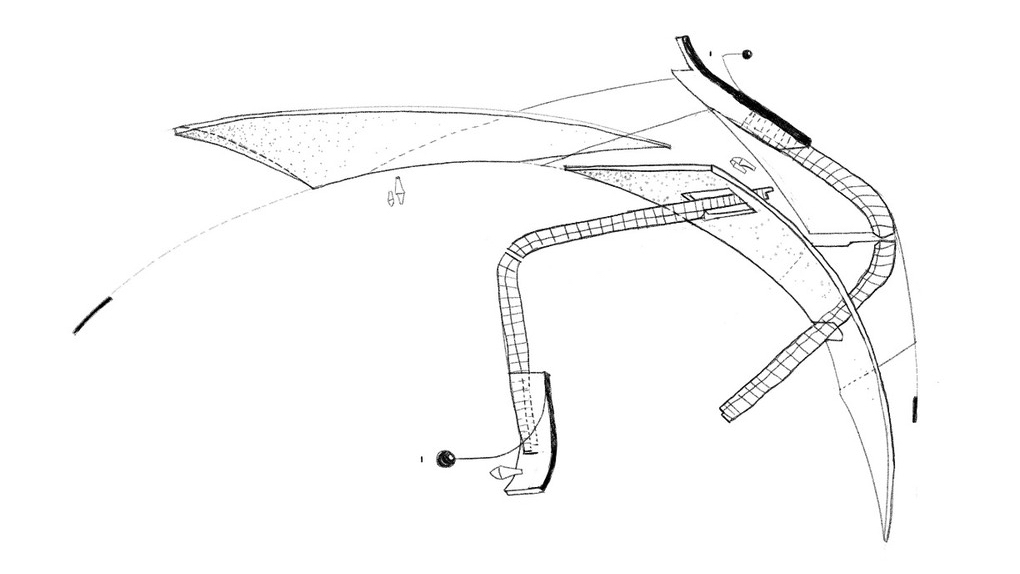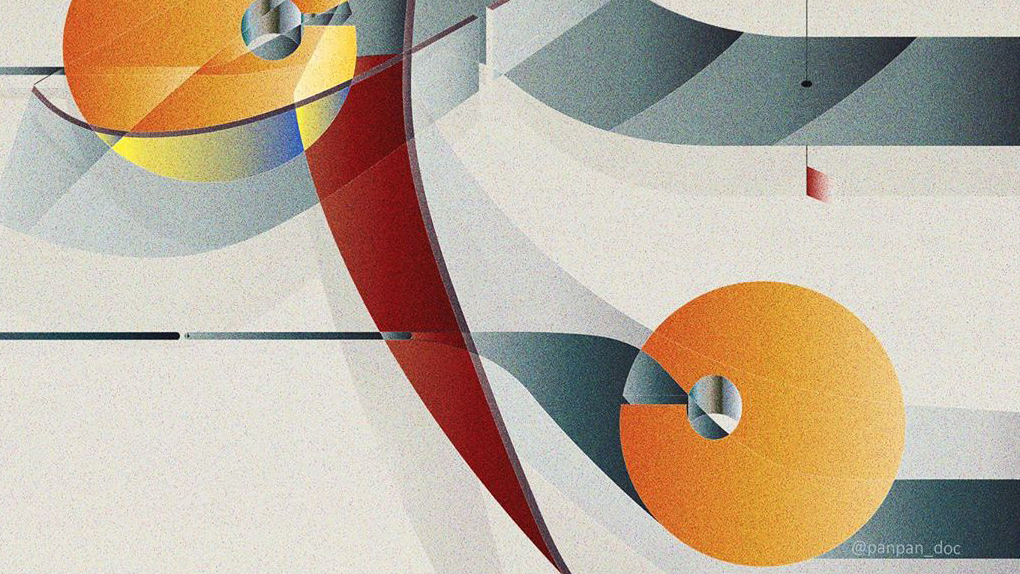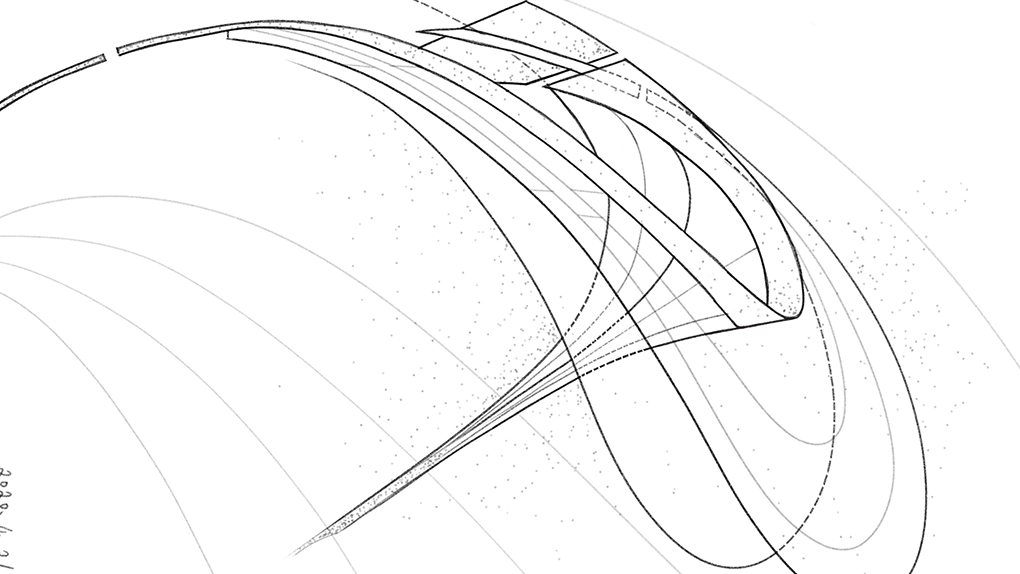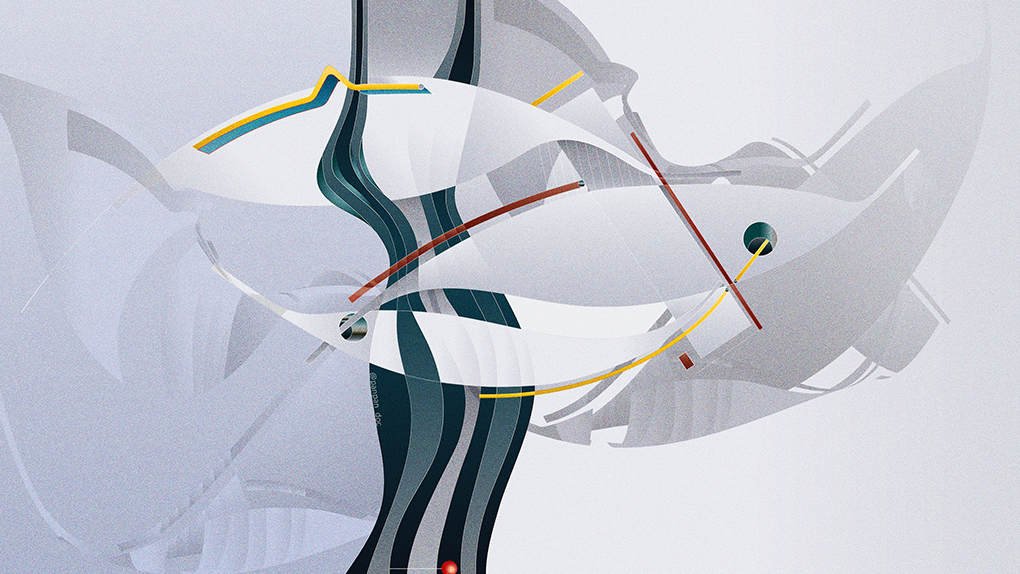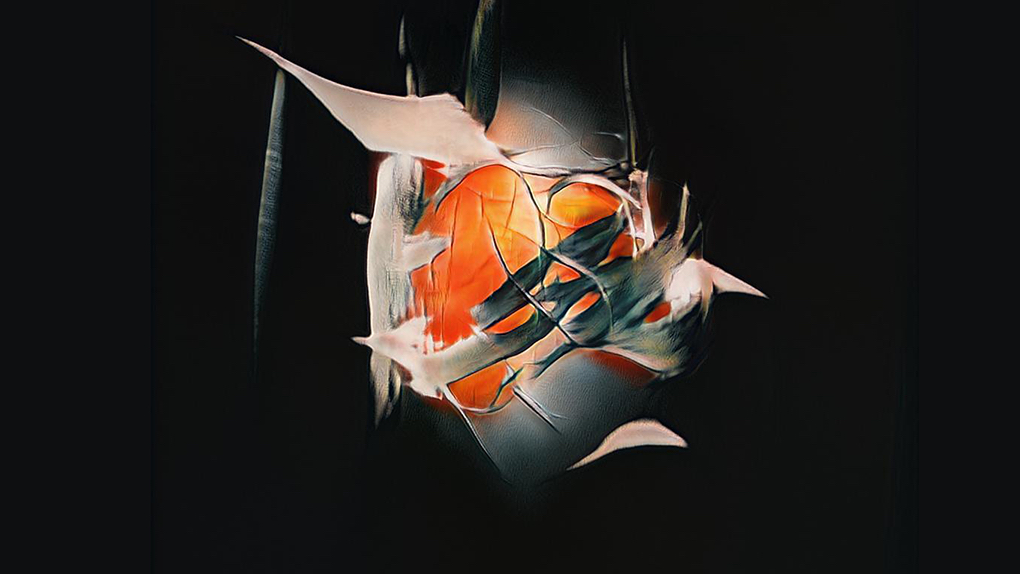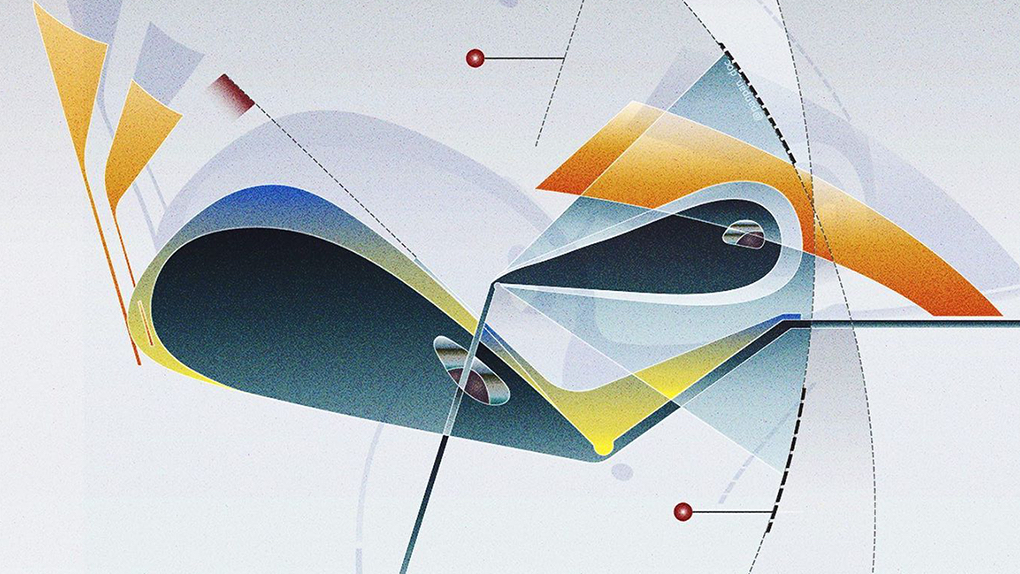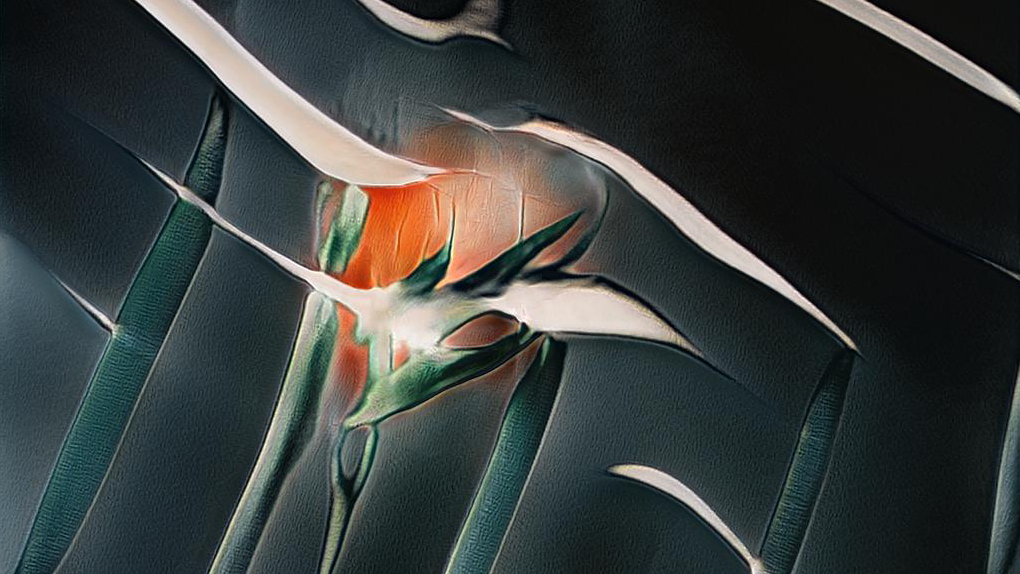You will be okay.
Helen Hutchens
https://youtu.be/s9VLrtDQSbo
Description
These are magical, hand-knit, arcane, medieval gloves (likely worn by a wizard or herbalist or elf) modeled off archer's gauntlets from antiquity whose accelerometer data runs into p5.js. The sketch is simple: it says that “you will be okay.” The background HSB is what the parsed-through data operates on.
“You will be okay.” Is it a promise? A mantra? A wish? A cry? I'm not sure I know—perhaps that's the point. I am certain, however, of how therapeutic this work was for me to make. It was one of my first moments where I really felt like I entered a flow state when coding. I didn't plan for the text to say what it did, but I found my hands typing: ('you will be okay', positionX/2, positionY);
It was therapeutic, sitting on my fire escape knitting. Maybe I was yearning for certainty, something that came through the attempt at manufacturing some semblance of artificial control. Being able to cast spells with little arm guards I made myself in solitude felt healing. Archers wear arm guards because they do not want to get bruised by their own longbow string; for me, because I have the privileges and safety associated with having all my basic needs met like having housing stability and ample food and drink, quarantine has mainly been a battle with myself. So I like that the same body that can be so destructive to itself is also able to make something that's a shield. Like, I needed to make this because I make myself unwell sometimes. But I can make this with the same hands and make myself less unwell, too. Attenuating destructive hands with shields of soft embrace. Protective armor that still is able to say “I love the world.” Knit chainmail.
The colors are very sensitive to your motion. If your arm quivers, so do they. If you want to let out your aggression, the colors accept you. If you want to move slower, flow, dance, they mirror you. I've been dancing in my apartment a lot lately. That often makes me feel like I will be okay.
IMA/ITP New York
ITPG-GT.2189.001
Intro to Wearables
Art,Wearables
